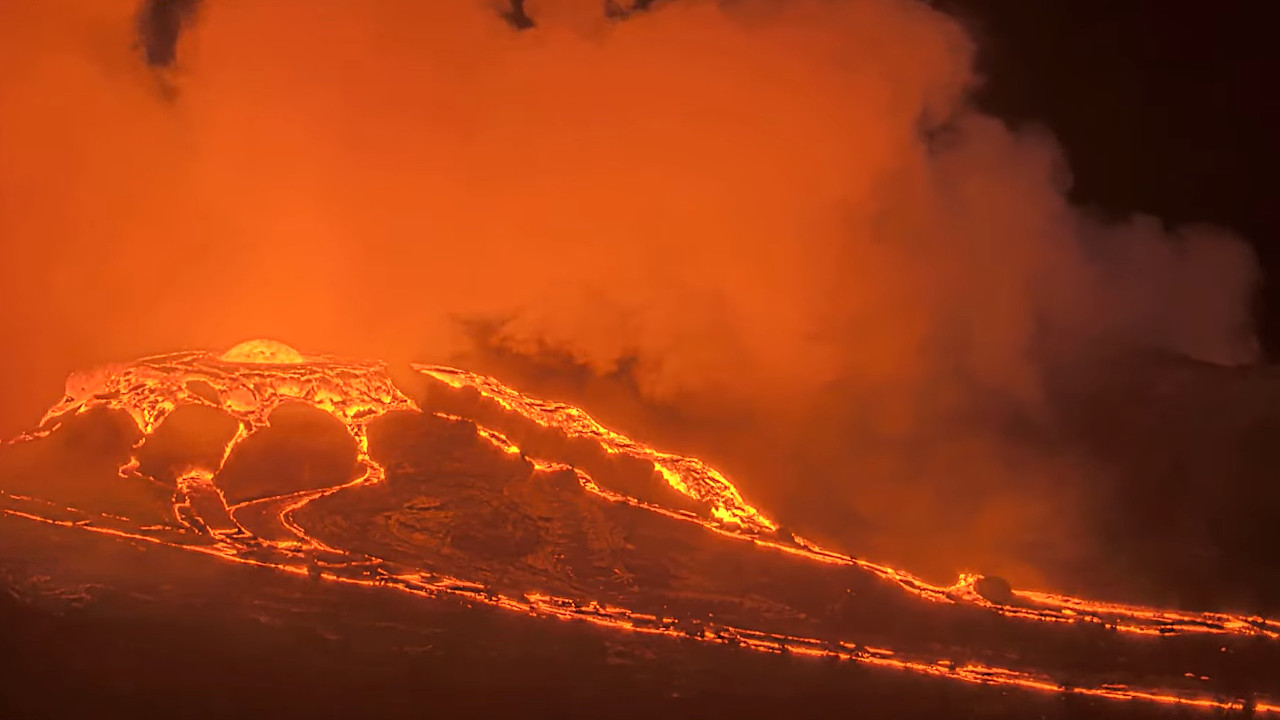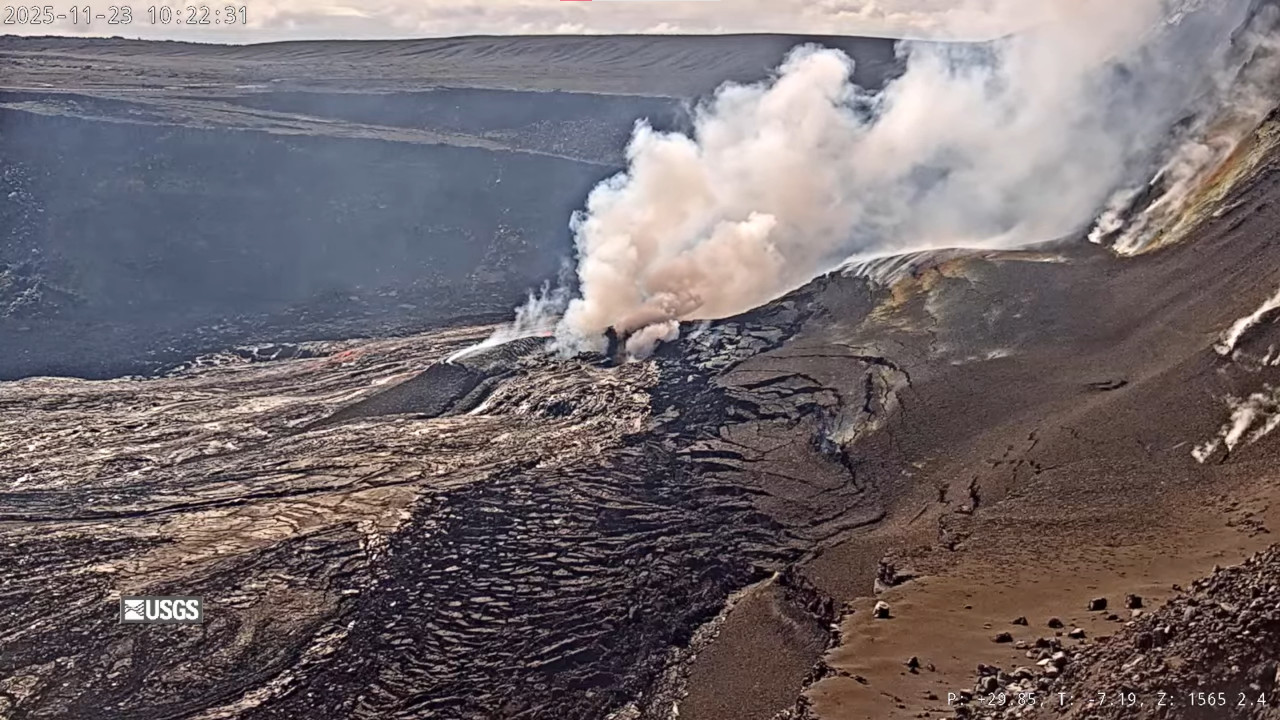(BIVN) – Periodic overflows continue at the Kīlauea summit vents, as the ongoing eruption within Hawaiʻi Volcanoes National Park builds to the next episode of high lava fountaining at the caldera.
“We are currently in the forecast window for episode 37,” scientists with the USGS Hawaiian Volcano Observatory said in a Sunday morning update, noting inflationary tilt continues to be recorded by summit tiltmeters.
Episode 37 will most likely occur sometime between today, November 23, and Tuesday, November 25.
From the USGS HVO on Sunday, November 23:
Periodic overflows continued from the south vent yesterday and overnight. During the daytime yesterday, overflows were frequent, approximately every 15-45 minutes, and short-lived, lasting approximately 5-15 minutes each. Activity changed by 6:00 p.m. HST yesterday evening to less frequent, longer duration (50-70 minutes) overflows that each produced dome fountains of 5-10 meters (15-30 feet) in height. Each of these dome fountain overflows was associated with a minor increase in seismic intensity (RSAM) and coincident decrease in tilt. There have been 58 overflows from the summit vents since overflows began on Friday at 9:30 a.m. HST. Overflows alternated between the vents on Friday but have been largely from the south vent since Friday evening. Small tremor bursts associated with lava drain back continue to be recorded along with low to moderate seismic tremor.
Inflation continues at the summit, but slowly. UWD recorded less than 1 microradian of inflationary tilt in the past 24 hours for a total of 21.4 microradians recorded since the end of episode 36 on November 9.
Plumes of gas are visible from both the south and north vents, and sulfur dioxide (SO2) gas emissions remain at eruption pause levels, typically between 1,200 and 1,500 tonnes per day.
Episode 36 began at approximately 11:15 a.m. HST on November 9 and ended at 4:16 p.m. HST, after erupting for 5 hours. The north vent stopped earlier, at 3:38 p.m. HST, and the south vent gradually decreased in height and volume until it stopped erupting at 4:16 p.m. HST. South vent fountains reached heights of about 1,200 feet (360 meters) and north vent fountains reached heights of about 750 feet (230 meters). Episode 36 fountains produced just under 11 million cubic yards (about 8 million cubic meters) of lava. The combined average eruption rate was over 600 cubic yards per second (500 cubic meters per second) from the dual fountains. Lava flows from the fountains covered about 80 percent of the floor of Halemaʻumaʻu crater. The Uēkahuna tiltmeter (UWD) recorded 23.5 microradians of deflationary tilt during episode 36. The end of the episode was coincident with a rapid change from deflation to inflation at the summit and a decrease in seismic tremor intensity.
The USGS Volcano Alert Level for Kīlauea remains at WATCH.



by Big Island Video News11:01 am
on at
STORY SUMMARY
HAWAIʻI VOLCANOES NATIONAL PARK - Models suggest the start of Episode 37 will start sometime between today, November 23, and Tuesday, November 25.